Each dacket or owner of the land plot seeks to improve its decorative or fruit trees. Most often, the walnut can be found in the household sites - a unpretentious long-lived tree with a luxurious crown that every year brings a good crop. But, there are also hybrid types of walnut, adapted to more severe climatic conditions, such as walnut walnut. The originality of the tree is attached to the fruit of an unusual form in the form of a heart. To taste, these nuts are superior to the famous walnut. How to put and grow a tree, read further.
Heart Walnut: Description
The Motherland of the Tree is Honshu Island in Japan, where it grows in the wild, reaching a height of up to 15 meters. The wild core is considered to be an endungent species and is listed in the Red Book.
Botanical heart-shaped nut
- The bark of the tree has a grayish color, and shoots - brown. Walnut shoots are pubescent, on the touch sticky with large vertex kidneys, reaching in Dina to 2 cm. Sheet branches are pulled up to 1 meter in length, they are located from 11 to 15 leaves.
- The tree crown is rareered and has a shape of a tent. Adult trees reach a height of up to 10 meters.
- Large leaves are large from 6 to 18 cm in length, the oblong shape with a pointed end is located on short stiffs. The upper part of the leaflet is smooth, and the lower part, along the veins, is slightly pubescent.
- Flowers Walnut in May-June, at the same time leaves appear. Two types of flowers are formed in the nut. Women's - pedestal, collected in large brushes (8-12 pieces) with long stalls painted in a reddish hue. Men's flowers are beautiful, long earrings with stamens, which reach lengths up to 20 cm.
- After flowering, fruits are formed, assembled into large clusters of 8-12 fruits. Excellent green, inside it matures a flattened nut into the shape of a heart, thanks to such a structure, the garden culture obtained the original name. Ripe fruit has an average size (up to 5 cm in Dina, 4 cm in width). The outer shell is brownish color, thin and smooth. When pressed, it is easy to split into smooth halves, which externally resemble a medallion in the shape of a heart. Inside the shell is a kernel without internal partitions. The time of maturation of the fruit is the beginning of autumn.
- This type of walnut is a winter hardy culture, well adapts to harsh conditions of growth in the middle lane of Russia. Sustainable to many diseases.
- The first fruits of the tree brings 6-8 years after the landing, when the seedling is well rooted. Good yields can be obtained only when the nut reaches 20 years of age.
- The core walnut is a samopidal culture. To get a crop enough to put one tree on your site.
- The nute cereal is a long-liver, can grow about 200 years.
Heart-shaped nut - Useful properties
The fruits of the root of the heart-shaped are recognized as one of the most useful tasty nuts. Fatty and taste qualities are deer than walnut. In addition, they reduced the content of tannins, so after their use does not occur in the throat, as after walnuts. With regular use, the level of cholesterol in the blood is reduced, the risk of developing heart disease and atherosclerosis is reduced. Nuts contribute to the circulatory system and kidney prevent avitaminosis, improve vision. Including in your diet nutritious nuts, you bring invaluable benefit to your body.
Heart Walnut: Growing
In order for a strong beautiful tree in your garden and brought a big yield of delicious nuts every year, it is necessary to choose the right place to fit it. Walnut core walnut is a thermal-loving culture, well develops in the eastern or western side of the garden. When landing on the south side needs to be shared. Since the tree has an empty crown (in diameter up to 15 meters), a great solution is to put it around the perimeter of the site. Landing of this type is carried out by seeds or seedlings. Experienced gardeners use the vaccination method.
Planting a heart-shaped seedlings
Heat-shaped seedlings can be bought in specialized stores, where they are sold in containers or with an open root system:
- Choose seedlings with strong roots, without damage to the trunk. It is important to remember that young seedlings first develop the root, and only then he increases the green mass. The smaller the leaves, the faster the seedling is rooted and easier will transfer stress after planting in a new place.
- Saplings grown in the container are ready for landing and spring, and autumn.
- The soil for planting a young walnut should be light, fertile and moisture-permeable with neutral acidity. If heavy primer prevails on the site, it is necessary to organize a good layer of drainage in the landing pit.
Stages of landing seedling stairs
- Preparation of landing pit. For planting a seedling, a pit is needed to a half-meter in width, at least 70 cm depth. It should be digging over two months before the planned planting of the seedling.
- The pit is filled with soil: part of the garden land is mixed with humus, wood ash and add phosphorus-potash fertilizer.
- A seedling is placed in the prepared pit, carefully placing the root. The root walnut must be 5 cm above the level of the soil. Earth should be carefully tamped, trying not to damage the roots.
- After landing, the seedling must be abundantly pouring water, at least two buckets under one tree, to moisten the soil well.
- To hold the required level of moisture in the soil necessary for rooting the village, along the perimeter of the rolling circle, lay a layer of mulch, for example, straw, sawdust.
- The trunk of a young seedling is quite fragile. To protect the young church from the bustovs of the wind, it should be tiered to the support - a wooden peg that deepens at a distance of 10 cm from the barrel.
Core Walnut: Cultivation of Seeds
- Heat-shaped seeds are ready for landing in autumn, they are plugged into the ground. The germination of the root of the heart-shaped - two years.
- Also, seeds can be planted in spring, but they are preparing to land in advance. Mature walnut fruits are collected in September, clean them from the shell (pericarp) and stored in a dry, well-ventilated room.
- In January, stratification of the rut of the heart-shaped, to plant in the spring in the spring. For this, the walnut seeds are placed in a package with wet sand and are sent to the refrigerator, where they are hardened until spring.
- Sowing seeds can be carried out in May, in a heated land, immediately at a permanent place, as the young trees react poorly to the transplant. The depth of seed planting is up to 6 cm. Before opening the seeds to the ground, they need to soak them in warm water for several days.
- The first shoots appear in June or July. Since the plant all forces directs the root to the growth, and only then on the ground green part.
Heart-shaped nut after landing - Subsequent care
- Wintering.The first 2-3 years after planting a seedling, walnut needs good shelter from frost in winter. When the tree is rooted and strengthened, the need for winter shelter will disappear. With age, this type of nut tolerates harsh climatic conditions perfectly. For the winter, young seedlings are wrapped with agrofiber, the rolling circle is mounted with straw, hay or sawdust.
- Watering. The tree needs abundant irrigation, especially in the summer. To preserve the moisture of the soil, the proper circle is mounted with sawdust or straw. Young seedlings need wet soil, but without moisture in the ground. The plant is easier to transfer drought than excessive humidity.
- Loosening. Soil under the tree need to loosen, remove weeds. In the fall, it is recommended to use the foliage foliage as a mulch, this will serve as an additional source of valuable nutrients for the development of the plant.
- Podrel. During the year, the walnut needs fade by mineral fertilizers. In the spring, the ground fertility fertility, the autumn period uses superphosphate, ammonium nitrate, potassium salt.
- Trimming. To form a luxurious spreader crown, it is necessary to perform regular trimming of the tree, as well as to remove dry and damaged branches in the fall. Thanks to the trim, the nute gives good crops.
- Pest diseases. One of the advantages of this type of nut is its sustainability to many diseases. Pests and insects bypass the root of the heart side.
Nut heart shape: application
In addition, the adult tree gives an excellent harvest of delicious and healthy nuts, it has a large decorativeness. High, strong trees with a thick spreaded green crown looks majestically in the garden. The nute is often used in decorative purposes for decorating parks and recreation places.
- A tree in the spring looks especially elegantly when bright pink-red stamens are blooming. Long leaves and bunches of green fruits retain their decorative for the entire growing season. The nute heart has an excellent ability to clean the polluted air from the vapor of gasoline and perfectly transfers the unfavorable conditions for growing in the city.
- In European countries, walnut's walnuts are appreciated for its solid and beautiful wood, from which furniture is made.
- Although this type of walnut is self-free, but it is well pollinated by other types of nuts, therefore, if you plan different types of nuts next to him, various hybrids can work out. It is recommended to disembark different types of nuts no closer than 10 meters from each other.
- Having reached the age of 20 years, the tree gives the highest possible yields of nuts - up to 110 kg of mature fruits from one tree.
Heart shape: reviews
The nute is a beautiful tree that will not only bring a crop, but also decorate the country garden. It is only necessary to gain patience and wait for the first crop. Fruits appear only by 6-8 years after planting a seedling.
Judging by the reviews of the gardeners who decided to plant a Japanese handsome in her garden, the tree is well taken out in the conditions of the middle strip of Russia and in Ukraine.


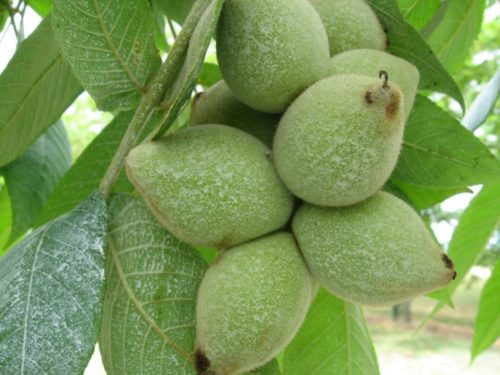
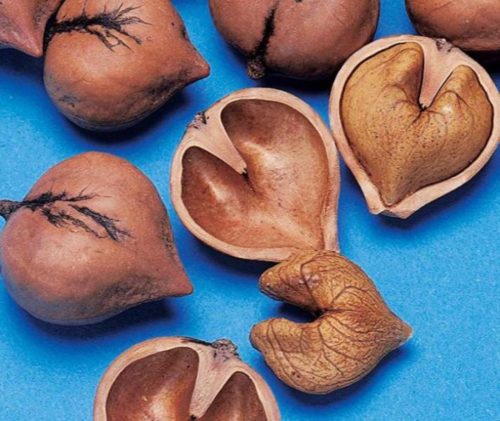

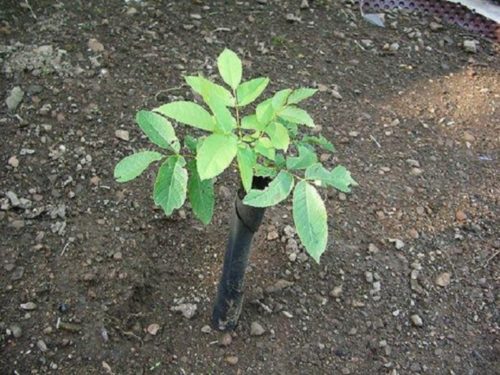
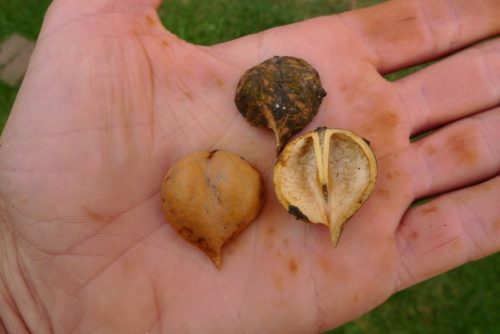

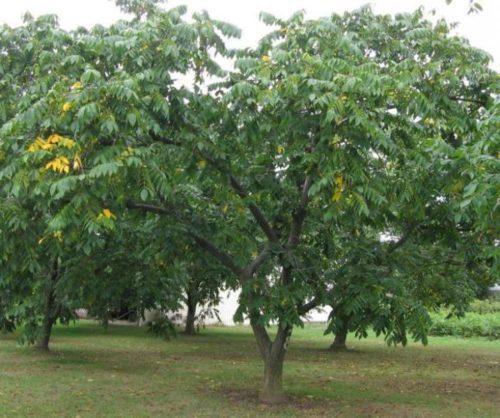
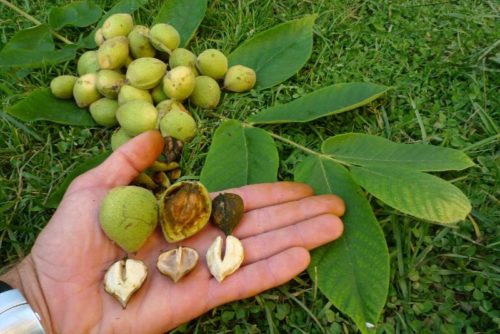
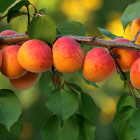











 Start a discussion ...
Start a discussion ...